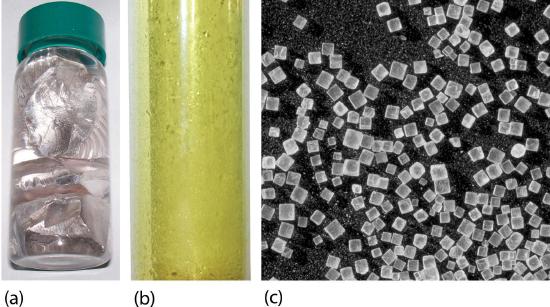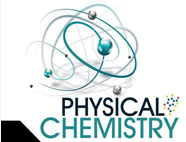


 علم الكيمياء
علم الكيمياء 
 الكيمياء التحليلية
الكيمياء التحليلية 
 الكيمياء الحياتية
الكيمياء الحياتية 
 الكيمياء العضوية
الكيمياء العضوية 
 الكيمياء الفيزيائية
الكيمياء الفيزيائية
 الكيمياء اللاعضوية
الكيمياء اللاعضوية 
 مواضيع اخرى في الكيمياء
مواضيع اخرى في الكيمياء
 الكيمياء الصناعية
الكيمياء الصناعية |
Read More
Date: 7-6-2019
Date: 26-5-2019
Date: 10-8-2020
|
Sodium chloride also known as table salt, is an ionic compound with the chemical formula NaCl, representing a 1:1 ratio of sodium and chloride ions. It is commonly used as a condiment and food preservative. Salt can be created by adding two very reactive elements together: sodium (Na(s) metal and chlorine (Cl2(g) gas.
The element sodium (Figure 1a ) is a very reactive metal; given the opportunity, it will react with the sweat on your hands and form sodium hydroxide, which is a very corrosive substance. The element chlorine (Figure 1b) is a pale yellow, corrosive gas that should not be inhaled due to its poisonous nature. Bring these two hazardous substances together, however, and they react to make the ionic compound sodium chloride (Figure 1c ), known simply as salt.

Figure 1 : Sodium + Chlorine = Sodium Chloride (a) Sodium is a very reactive metal. (b) Chlorine is a pale yellow, noxious gas. (c) Together, sodium and chlorine make sodium chloride—salt—which is necessary for our survival. Source: Photo on the left courtesy of reenhorn1 and photo in the center courtesy of Benjah-bmm27. Photo on the right © Thinkstock.
Salt is necessary for life. Na+ ions are one of the main ions in the human body and are necessary to regulate the fluid balance in the body. Cl− ions are necessary for proper nerve function and respiration. Both of these ions are supplied by salt. The taste of salt is one of the fundamental tastes; salt is probably the most ancient flavoring known, and one of the few rocks we eat. Clearly when the elemental sodium and chlorine combine (Equation 1), the resulting salt product has radically different properties (both physical and chemical).
Another compound is sugar, which is the generic name for sweet, soluble carbohydrates, many of which are used in food. Sugar has the chemical formulate C12H22O11 and is constructed from different elements than salt: carbon, hydrogen and oxygen. While sugar qualitatively resembles table salt (often confused in the kitchen), they two have distinctly different physical and chemical properties. There are various types of sugar derived from different sources. While sugar is made with carbon, hydrogen and oxygen, it is considerably hard to syntheses from the constituent elements than table salt (Equation 1).



|
|
|
|
للعاملين في الليل.. حيلة صحية تجنبكم خطر هذا النوع من العمل
|
|
|
|
|
|
|
"ناسا" تحتفي برائد الفضاء السوفياتي يوري غاغارين
|
|
|
|
|
|
|
نحو شراكة وطنية متكاملة.. الأمين العام للعتبة الحسينية يبحث مع وكيل وزارة الخارجية آفاق التعاون المؤسسي
|
|
|